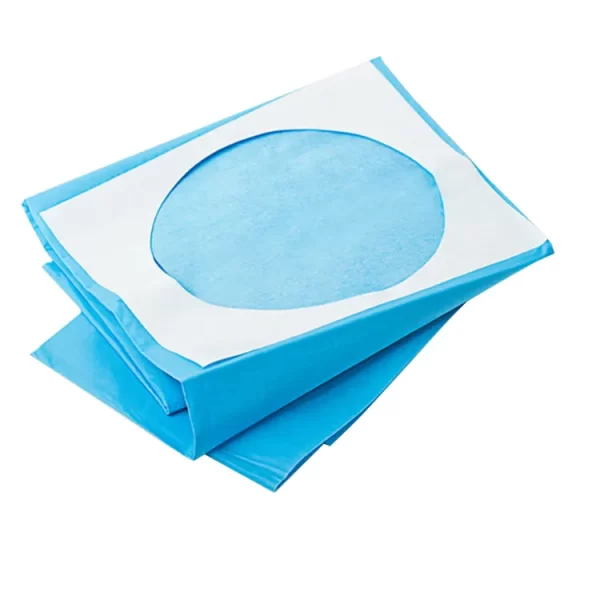The Evolution of Surgical Drapes: A Historical Perspective
Introduction
Surgical drapes, often an unsung hero in the operating room, play an essential role in preventing surgical site infections (SSIs). Their primary function is to serve as a barrier against potential contaminants, thereby maintaining the sterility of the surgical field. This detailed article journeys through the fascinating history of surgical drapes, tracing their evolution from rudimentary cloth coverings to the high-tech designs used today.
Part 1: The Humble Beginnings – Basic Cloth Drapes
The inception of surgical drapes dates back to the late 19th and early 20th centuries, a period when surgical practices were still in their infancy and the importance of sterility was not fully understood. Back then, rudimentary cloth materials were utilized as drapes, more for the purpose of ensuring patient privacy than for establishing a sterile surgical environment.
However, the dawn of the germ theory of disease brought about a paradigm shift in surgical practices. As healthcare professionals started acknowledging the link between microorganisms and infections, the function and design of surgical drapes began to evolve, reflecting a growing understanding of the importance of sterile environments.
Part 2: The Era of Awareness – Reusable Cotton Drapes
With the mid-20th century came significant strides in understanding infection transmission and prevention. This period saw surgical drapes transition into more purposefully designed, reusable cotton drapes that were regularly laundered and sterilized for repeated use. This development marked an elevated level of cleanliness and sterility in the surgical environment, reflecting an increased awareness of infection control.
However, reusable cotton drapes were not devoid of limitations. Their porous nature could allow for the passage of microorganisms, and inconsistent or inadequate sterilization could turn them into potential sources of cross-contamination. Moreover, the recurring process of cleaning and sterilization was both time-consuming and resource-intensive. These challenges paved the way for the next wave of innovation in surgical drape technology.
Part 3: A Revolutionary Turn – The Advent of Disposable Drapes
The 1960s and 1970s marked a transformative period in the evolution of surgical drapes, with the introduction of disposable surgical drapes. Constructed from lightweight synthetic materials, these drapes provided superior protection and sterility compared to their reusable counterparts.
The advent of disposable drapes essentially eliminated risks associated with reuse, such as cross-contamination and inconsistent sterilization. Their single-use nature meant that each patient had a fresh, sterile drape, thereby drastically reducing the likelihood of surgical site infections. This revolution in surgical draping practices transformed infection control measures, setting new standards in patient safety.
Part 4: Advancements in Material Technology – Non-Woven Synthetic Drapes
Following the introduction of disposable drapes, the next significant advancement in surgical drape evolution was the development of non-woven synthetic materials. Materials such as spunbond-meltblown-spunbond (SMS) and polypropylene provided an even more robust barrier against bacteria and other contaminants than earlier drape materials.
A key innovation in this stage was the incorporation of microfibers into non-woven fabrics. By reducing the diameter of the fibers, manufacturers could create drapes with a tighter weave, offering an improved barrier against liquids and microorganisms. These technological advancements further bolstered infection prevention measures and solidified the role of surgical drapes in maintaining operating room sterility.
Part 5: The Age of Specialization and Innovation – Modern Day Surgical Drapes
Today’s surgical drapes represent a culmination of decades of medical and technological advancements. They are crafted to offer maximal protection, with features that not only ensure patient safety but also enhance surgical efficiency. Modern drapes come equipped with fluid collection pouches to manage surgical fluids, adhesive strips for secure drape placement, and clear panels for improved visibility of the surgical site.
Moreover, manufacturers now offer a diverse array of specialized drapes tailored for specific surgical procedures. For instance, orthopedic drapes might feature pouches to collect irrigation fluids, while cardiac drapes may come with built-in incise films to provide additional patient protection.
Part 6: The Dawn of the Future – Smart Drapes and Sustainability
As we stand on the cusp of a new era, the future holds exciting possibilities for the evolution of surgical drapes. With the ongoing development of ‘smart’ textiles, we may soon see surgical drapes capable of more than just physical barrier protection. Imagine drapes embedded with sensors that can monitor surgical site conditions, detect contamination, or even release antimicrobial agents. This kind of dynamic, responsive technology could transform the landscape of surgical infection control.
In parallel, the increasing emphasis on sustainability in healthcare is prompting a fresh wave of innovation in surgical drape manufacturing. As the industry grapples with the environmental impact of disposable drapes, we see growing interest in developing eco-friendly, biodegradable surgical drapes. Such sustainable solutions could strike a balance between maintaining high standards of infection control and reducing the environmental footprint of healthcare operations.
Conclusion
From simple cloth coverings in the 19th century to the sophisticated, purpose-designed barriers of today, surgical drapes have come a long way. They stand as a testament to the medical industry’s commitment to patient safety and the relentless pursuit of technological advancement. As we look to the future, we can expect surgical drapes to continue evolving in response to emerging challenges and opportunities, with the ultimate goal of enhancing patient safety and improving surgical outcomes.
Please visit our website for more product details https://medposnonwoven.com/product/adhesive-side-surgical-drape/

